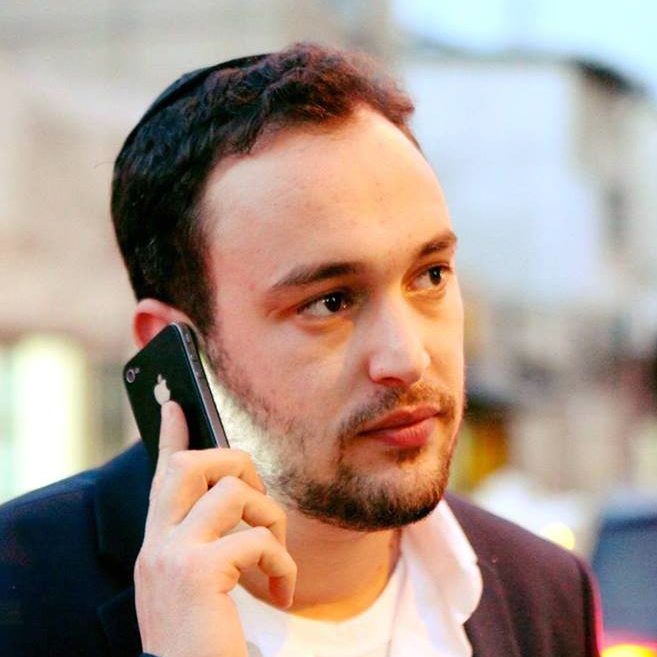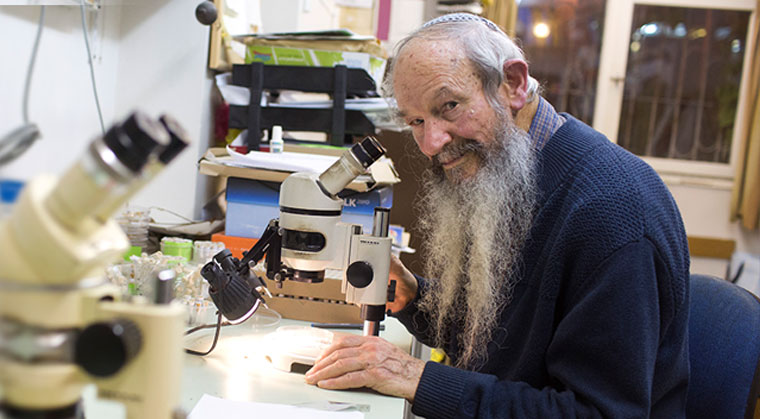Grains of Truth

Professor Mordechai Kislev has spent decades of his research synthesizing agricultural facts mentioned in the Talmud with archaeological discoveries related to the botany of Eretz Yisrael

(Photos: Lior Mizrachi)
F
or most residents of Eretz Yisrael, preparation for Tu B’Shevat involves an enjoyable trek to the local market to partake of the colorful bounty with which the Holy Land has been blessed.
Agricultural botanist Professor Mordechai Kislev is no different, although, he observes, the agricultural significance of the day has disappeared to a large extent. “Today most people live in an urban as opposed to a rural society. How many of us have ever planted a tree? How many work in agriculture? It’s a disappearing world. That’s precisely why it’s all the more important to strengthen the age-old traditions of Am Yisrael.”
While today many Tu B’Shevat celebrants tap into the esoteric, kabbalistic energy of the day where, among other mystical ideas, trees are a metaphor for renewal even when life looks like the dead of winter, the physical aspect of the day — which has significance regarding basic agricultural halachos — is not to be mitigated.
“Even though the contemporary Jew is much less connected to the land than in the past, Chazal instituted a day to celebrate the trees for all generations,” says Professor Kislev. “Tu B’Shevat has tremendous significance for almost all the mitzvos hateluyos ba’aretz, and should really have a greater presence in all of our lives.”
Professor Mordechai Kislev, archeological botanist, professor emeritus at the Bar Ilan University Faculty of Life Sciences, and a talmid chacham with whom poskim consult on issues of agriculture and halachah, has made it his life’s work to discover and restore the plant life that existed in Eretz Yisrael thousands of years ago. One of the most noted and quoted authorities in Israel, Kislev’s research figures prominently in global scholarly literature, contributing to the existing body of knowledge on ancient societies. On a more practical level, many aspects of his work enable talmidei chachamim and laymen alike to find a context for the various halachos and minhagim that are part of our daily lives.
Wheat from the Chaff
Professor Kislev will soon be celebrating his 81st birthday, but that doesn’t stop him from continuing to be active in the academic community at the forefront of botanical breakthroughs and contributing to professional literature. To date he’s written over 200 scientific articles, and he hopes to double that achievement in the coming years.
What exactly is archaeological botany? The term does little to explain the scope and multifaceted nature of this discipline.
Archaeology is more often associated with the discovery of tombs, buildings, and pottery shards than with plants. Yet small and fragile plant remains can be every bit as valuable, if not more so, in providing information about human life in the past. By the start of the 20th century, botanists, geologists, and zoologists were working with archaeologists to research a shared interest in the past. But it is only in the last 50 years that archaeologists have grasped the wealth of knowledge that can be gained from a careful collection and study of ancient botanical remains and have developed analytical techniques to identify and date them.
And that’s where Professor Kislev’s work comes in. “The purpose of my research is to learn about our heritage through the world of archaeology,” he says. And he hasn’t been disappointed. The many findings he’s amassed over the years have amazed him as well as his staff of researchers. On Kislev’s desk are charred grains of wheat, barley, and other unidentifiable seeds, dated to various periods of Jewish settlement in Eretz Yisrael.
“Most of the findings are burnt,” he says, pointing out some blackened grains. “That’s one of the reasons why they survived. Through these grains we can learn a great deal about the people of the period — what they grew, how they ate, how they lived.”
For Professor Kislev, nothing can be more exciting than finding evidence that bolsters what is written in the Torah, although he’s emphatic when he says that we don’t need proof that the Torah is true.
(Excerpted from Mishpacha, Issue 695)
Oops! We could not locate your form.







